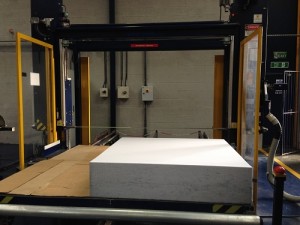The Foam Conversion Process
The foam conversion process involves several distinct steps, each contributing to the final product’s quality and characteristics. Let’s delve into the key stages:
1. Material Selection
The first step in foam conversion is selecting the appropriate foam material based on the product’s intended use and specifications. Different types of foam, such as polyurethane foam, memory foam, and closed-cell foam, offer distinct properties suitable for various applications.

2. Cutting and Shaping
Once the foam material is chosen, the cutting and shaping process begins. Advanced machinery, such as computer numerical control (CNC) routers and water jet cutters, precisely cut the foam to the desired shape and size.
3. Lamination
Lamination is a critical process that involves bonding multiple Foam Conversion layers of foam together to achieve specific characteristics, such as increased thickness or added strength.
4. Molding and Compression
In some cases, foam conversion requires molding and compression to create intricate shapes and designs. This process involves subjecting the foam to heat and pressure to achieve the desired form.
5. Fabrication and Finishing
The final step involves fabricating the foam into the end product, such as mattresses, packaging inserts, or acoustic panels. The finishing touches are added to enhance the appearance and functionality of the foam-based products.
Applications of Foam Conversion
Foam conversion finds applications in a wide range of industries, revolutionizing product design and functionality. Here are some notable applications:
1. Bedding and Furniture
In the bedding and furniture industry, foam conversion plays a vital role in producing comfortable and supportive mattresses, pillows, and cushions.
2. Packaging Solutions
Foam conversion is widely used to create custom packaging solutions that protect delicate and fragile items during transit.
3. Automotive Components
Foam conversion is instrumental in manufacturing automotive components, such as seat cushions and headrests, providing passengers with comfort and safety.
4. Soundproofing and Acoustics
In the entertainment and construction sectors, foam conversion creates soundproofing materials and acoustic panels for noise reduction and optimal sound quality.
5. Medical and Healthcare
Foam conversion techniques are used to produce medical devices, support aids, and padding used in healthcare settings.
6. Insulation Materials
The construction industry benefits from foam conversion as it provides insulation materials for temperature regulation and energy efficiency.
FAQs
Q: What industries benefit the most from foam conversion?
Various industries benefit from foam conversion, including bedding, packaging, automotive, entertainment, and healthcare.
Q: Is foam conversion an eco-friendly process?
Yes, foam conversion often involves the use of eco-friendly foam materials, contributing to sustainable practices.
Q: Can foam conversion be used to create custom shapes and designs?
Absolutely! Foam conversion allows for the creation of custom shapes and designs to meet specific product requirements.
Q: What type of foam is best for soundproofing applications?
Closed-cell foam is an excellent choice for soundproofing applications due to its high density and acoustic properties.
Q: How does foam conversion enhance automotive safety?
Foam conversion is used to create impact-absorbing materials in automotive components, enhancing passenger safety during accidents.
Q: What are the advantages of using foam-based packaging solutions?
Foam-based packaging solutions offer superior cushioning and protection for delicate items during shipping, reducing the risk of damage.
About the author